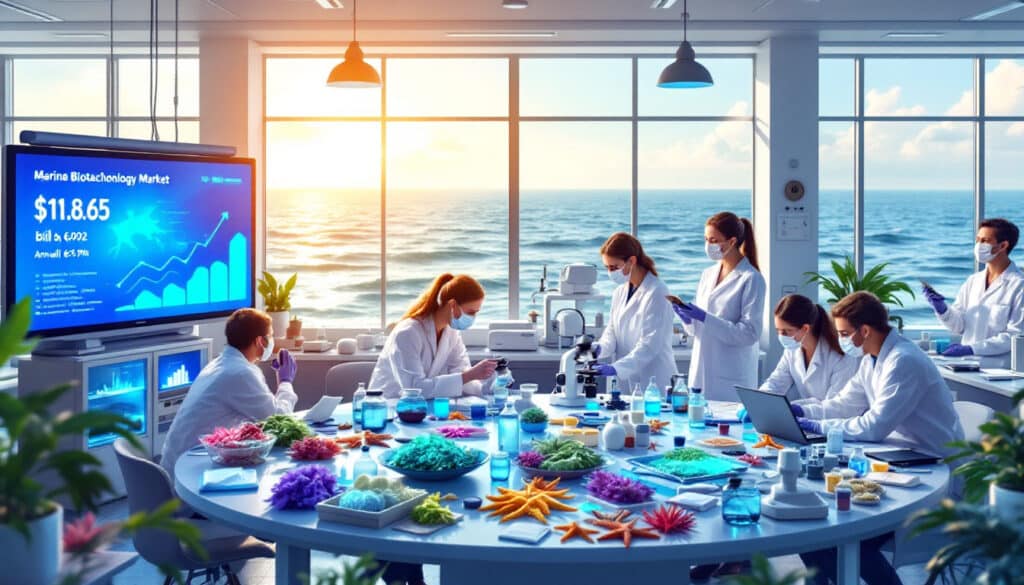The market for marine biotechnology is experiencing remarkable dynamics, with forecasts predicting a value of 11.85 billion dollars by 2032. This impressive growth rate of 6.9% per year, according to a report by SkyQuest Technology, highlights the increasing importance of marine solutions in the face of environmental challenges and innovation needs. Technological advancements in this sector promise to transform marine resources into sustainable opportunities, making marine biotechnology an indispensable future field.

Table of Contents
ToggleThe marine biotechnology market is booming
With forecasts stating that the marine biotechnology market is expected to reach 11.85 billion dollars by 2032, interest in this sector has never been stronger. The projected annual growth rate of 6.9% reflects the growing importance of innovation and sustainability on corporate and institutional boards. This market dynamic is explained by the increasing demand for sustainable solutions across various sectors, from healthcare to agri-food, and including biofuels. Marine resources, rich in bioactive compounds, thus become an unexplored playground for researchers and companies investing in biotechnology.
The opportunities offered by marine innovations
Innovations in marine biotechnology span various fields, including drug production, sustainable food, and environmental preservation. Algae, for example, play a central role in this revolution as they provide nutritious substances as well as medicinal properties. Companies are increasingly turning to the use of marine biological resources to develop innovative solutions that meet growing and urgent needs. Technological advancements also enable the design of cultivation methods for these resources, which could transform the way we exploit our oceans.
The challenges associated with the rise of the sector
As the marine biotechnology market develops rapidly, several challenges persist. Sustainability and preservation of marine ecosystems are at the forefront of concerns. It is essential to find a balance between resource exploitation and biodiversity protection. Regulations and governance also remain crucial issues that require tailored responses to frame the development of this strategic sector. Therefore, innovation must be accompanied by ethical reflection on the impact of human activities on our seas and oceans.









